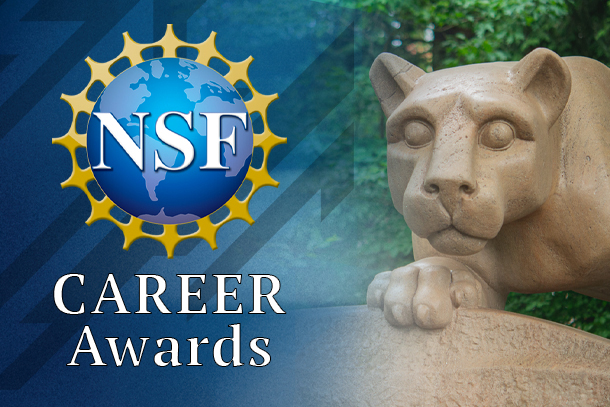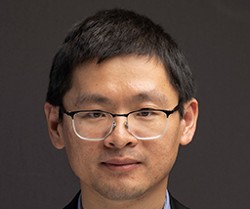
Credit: Kate Myers/Penn State
2023 NSF CAREER Award: Linxiao Zhu
March 3, 2023
UNIVERSITY PARK, Pa. — Linxiao Zhu, John J. and Jean M. Brennan Clean Energy Early Career Assistant Professor of Mechanical Engineering, earned a five year, $556,384 NSF CAREER Award for a project titled “Probing and Understanding Nonreciprocal and Topological Radiative Heat Transport in Many-body Magnetized Systems.”
What do you want to understand or solve through this project?
This project focuses on probing and understanding the nonreciprocal and the topological radiative heat transfer that emerge in multiple magnetized objects. Radiative heat transfer is ubiquitous, ranging from sunlight and incandescent lighting to infrared imaging. Systems containing magnetized objects are expected to support a range of new effects of radiative heat transfer, with potential applications for efficient heat exchange and improving energy conversion. The project aims to experimentally probe nonreciprocal and topological radiative heat transfer among at least three magnetized objects and to explore the use for improving heat exchange and energy conversion.
Nonreciprocal and topological radiative heat transfer have been predicted to exist among more than three magnetized objects, but there have been no experimental studies on these new effects. Experimentally probing and understanding these effects is important in order to explore revolutionary technologies based on these new effects of heat transfer.
How will advances in this area impact society?
Controlling radiative heat transfer is critical for applications in thermal management, energy conversion and imaging. Experiments of radiative heat transfer among multiple objects have been limited to non-magnetized systems, placing a fundamental constraint on radiative heat transfer. Exploring radiative heat transfer in multiple magnetized systems can lead to fundamentally new ways for controlling heat flow. The knowledge obtained in the project points to applications such as dynamical control of heat flux, energy harvesting, refrigeration and magnetic detection. The insights obtained in this work will make it possible to improve heat exchange for energy conversion, such as for harvesting sunlight, waste heat and cooling.
Will undergraduate or graduate students contribute to this research? How?
Achieving the ambitious goals in the project will require substantial student contributions. The interdisciplinary research provides a great opportunity for graduate students and undergraduate students to develop a broad set of skills, including experimental measurements, nanofabrication and theoretical modeling. The training students will receive as part of the project will help them for their development as researchers. We are glad to receive this award that will allow my students and me to study these exciting effects.
The NSF CAREER award not only funds a research project, but it also recognizes the potential of the recipient as a researcher, educator and leader in their field. How do you hope to fulfill that potential?
The educational and outreach activities of project include organizing "Thermal Emission for Energy with Nanoscience" workshops to train secondary precollege teachers for low-cost, hands-on activities that can be readily integrated into their classes; organizing micro-credentialing activities to introduce advances in radiative heat transfer to undergraduates; and creating a new graduate course on nanoscale thermal radiation. These activities will expand my role as an educator at Penn State. On the research side, the project addresses the emerging research fields of nonreciprocal and topological radiative heat transfer. Solving these challenges will advance the emerging fields and impact several applications such as heat exchange and energy conversion. My goal is to use my expertise and contribute to fundamental understanding of novel control of radiative heat transfer and the use of the knowledge for technological applications.




